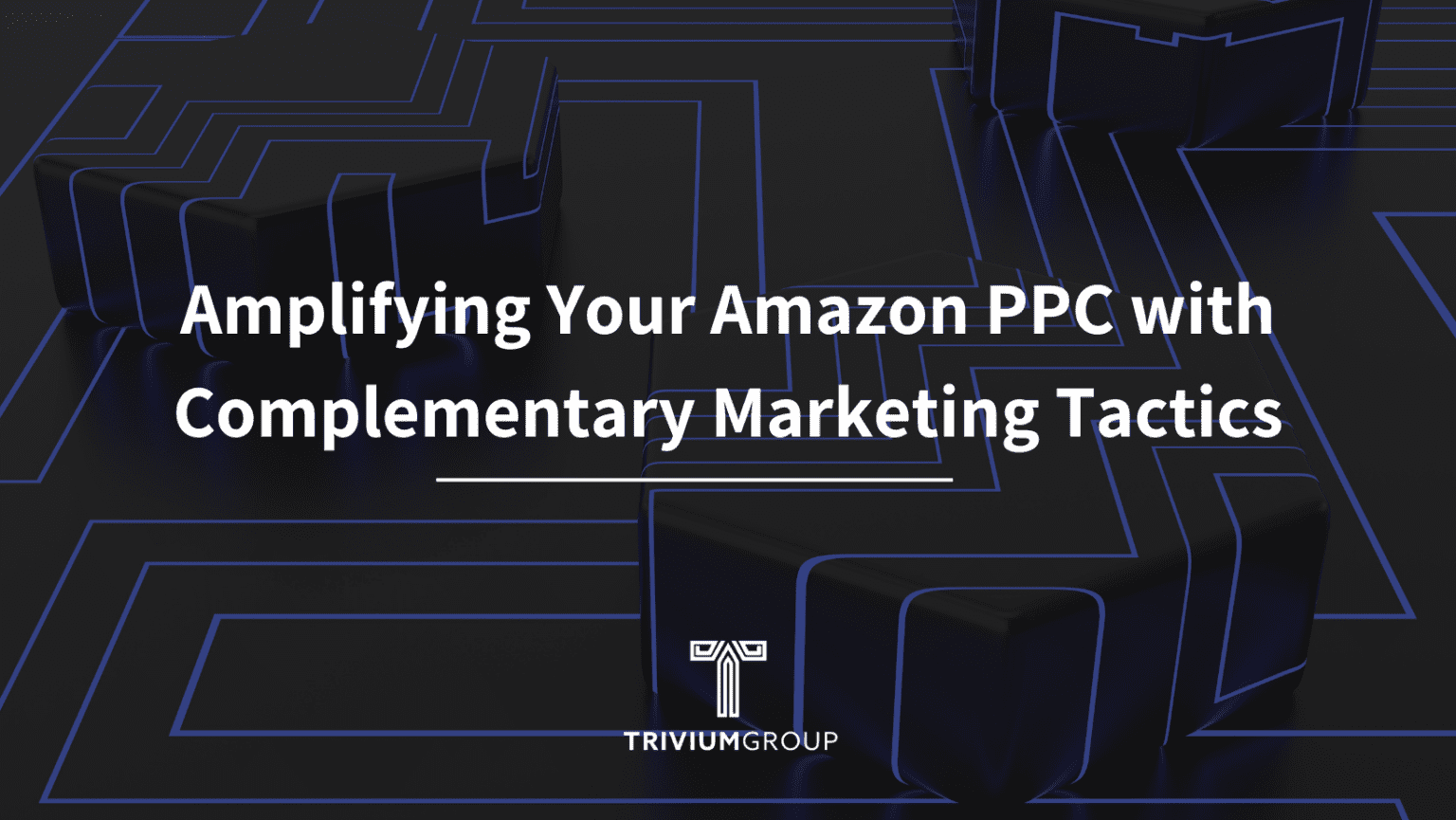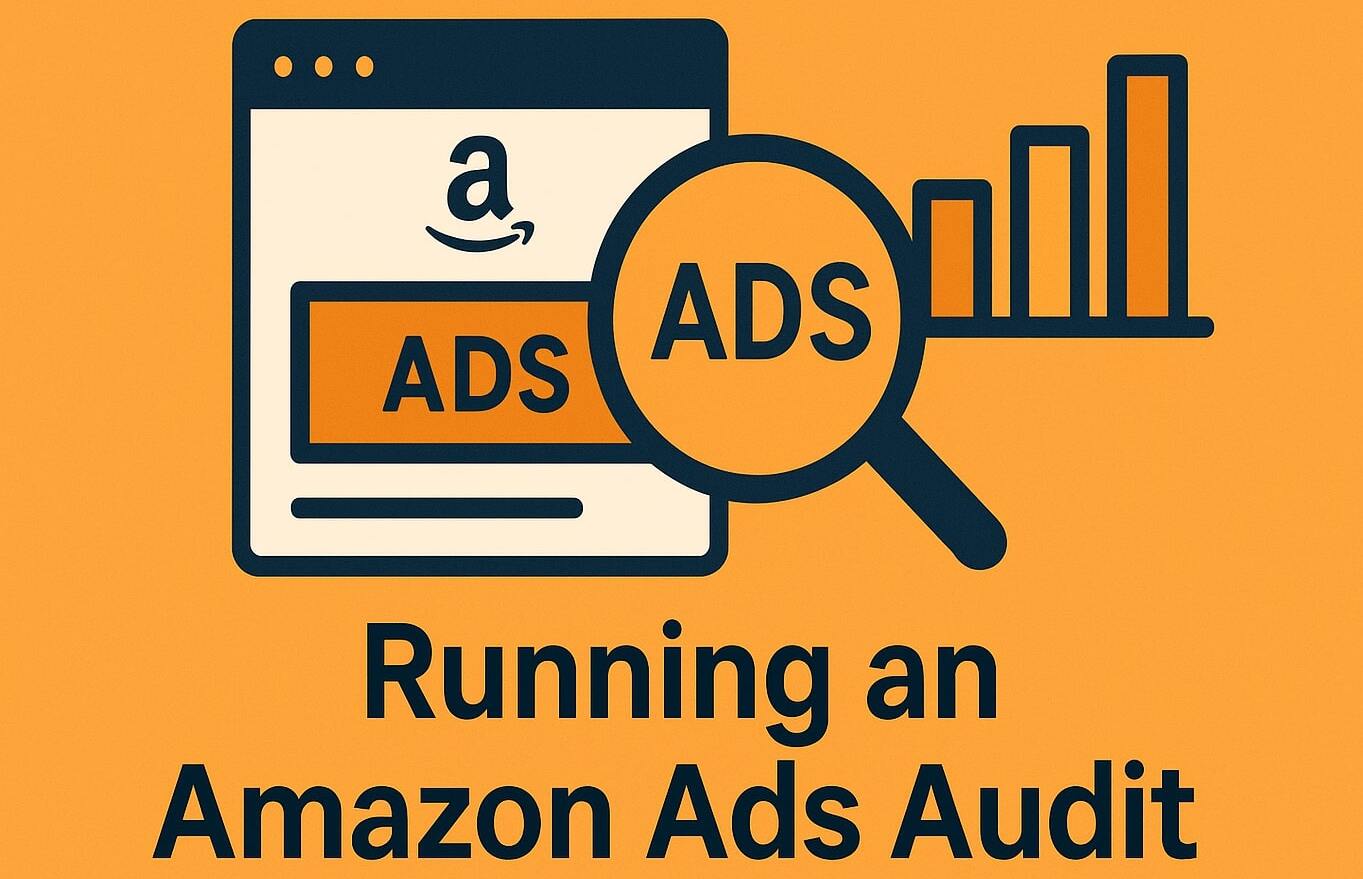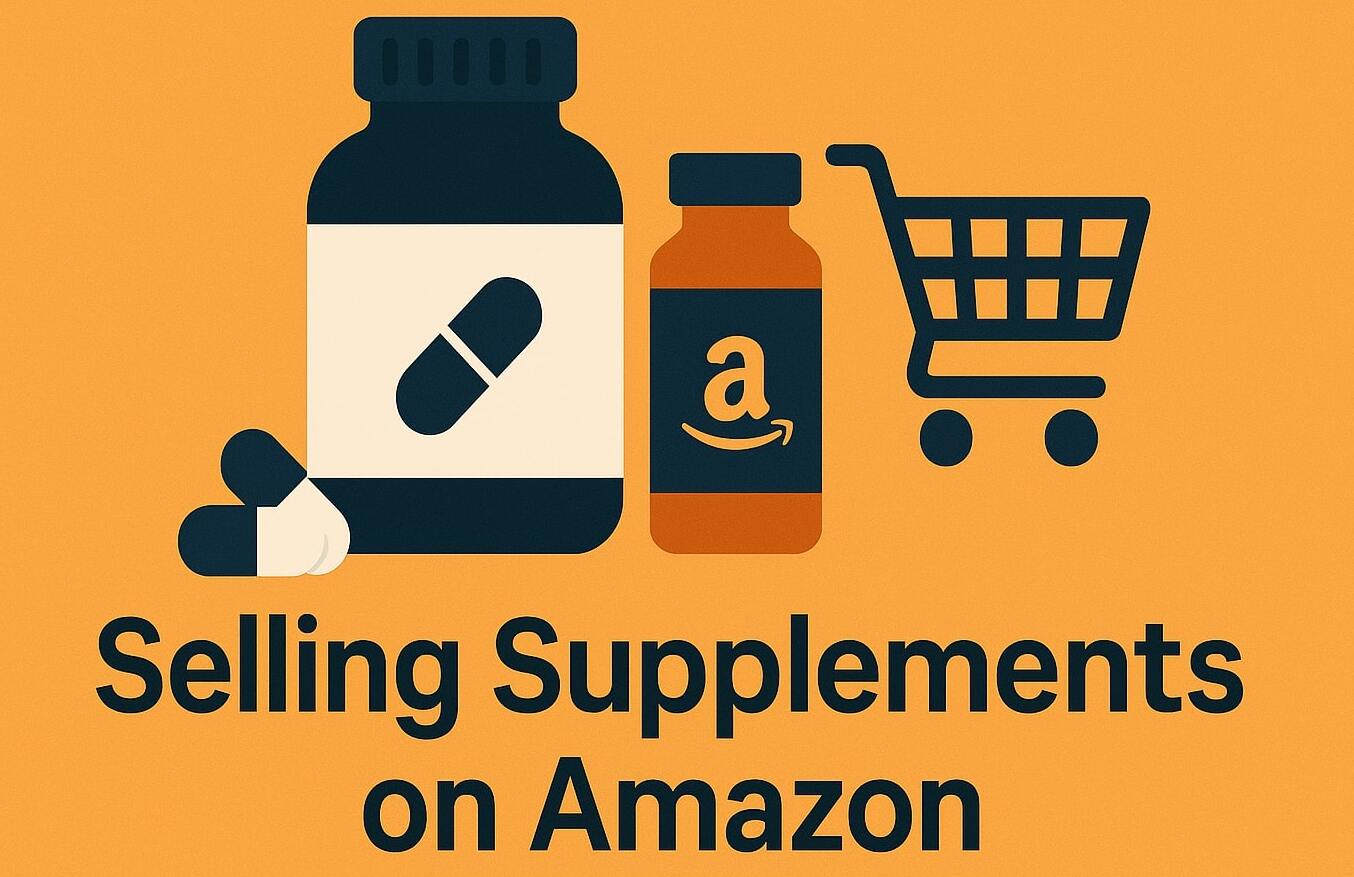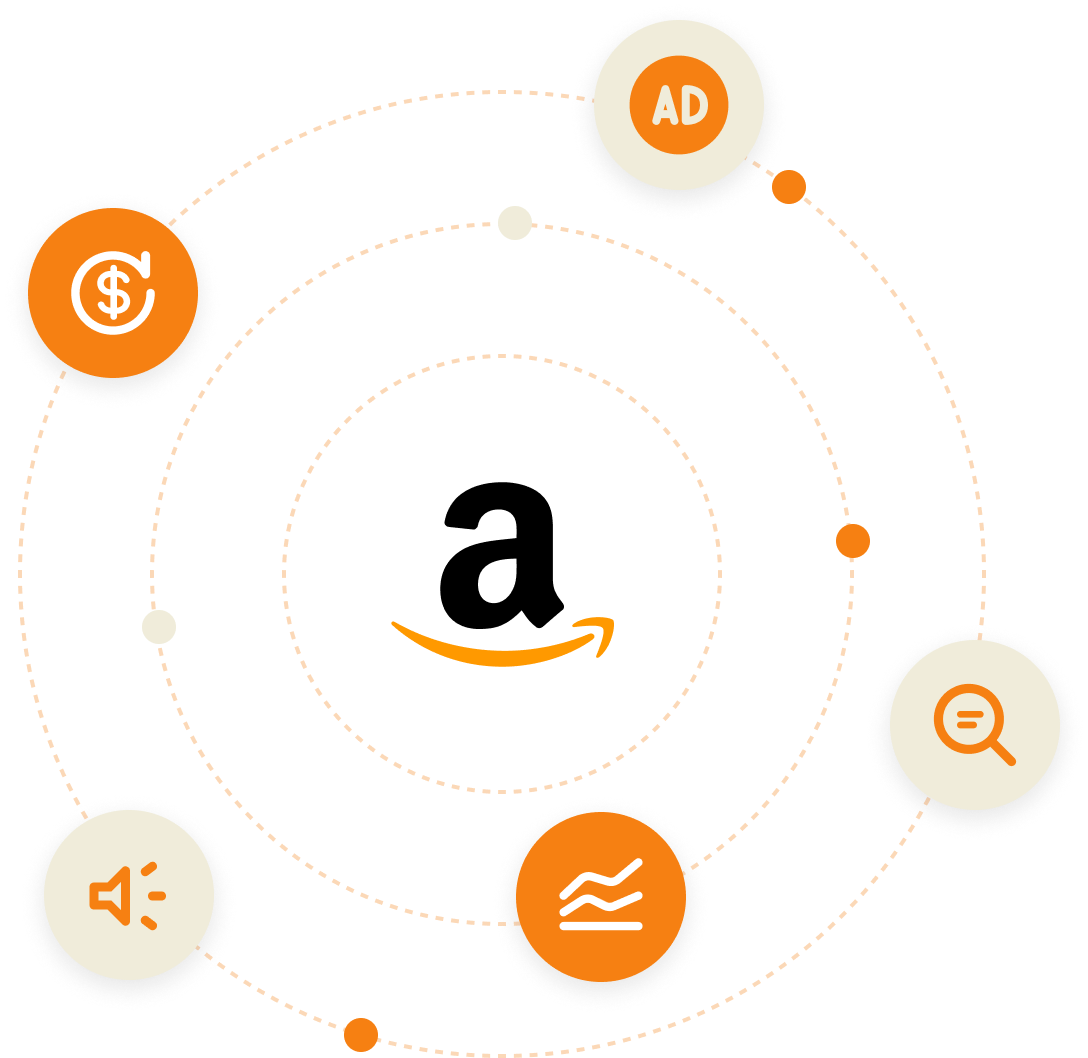Amazon Pay-Per-Click (PPC) is a powerful advertising tool designed to drive online traffic and increase product visibility. Each time a potential customer clicks on your ad, you pay a certain fee, hence the term ‘Pay-Per-Click’.
While Amazon PPC is a potent standalone tool, its efficacy multiplies when integrated with other marketing strategies. A holistic approach to your marketing strategy not only optimizes your chances of reaching potential customers but also creates a cohesive brand image across multiple platforms.
Is Your Amazon Store Reaching Its Full Potential?
Discover hidden opportunities, reduce wasted spend, and boost your sales with a free expert audit.
Our team will analyze your listings, ad performance, and overall account health to uncover exactly what’s working—and what’s holding you back. You’ll get a tailored blueprint to scale smarter, not harder.
Get a Free AuditBenefits of a Well-rounded Marketing Approach
Picture this scenario: You launch a new product on Amazon and start a PPC campaign. Simultaneously, you leverage email marketing to notify your existing customer base and use social media campaigns to create buzz. This multi-channel approach maximizes exposure, increases your customer reach, and boosts your chances of conversions.
In this article, you’ll learn how to amplify your Amazon PPC campaigns with other marketing strategies, ultimately driving more traffic and sales to your Amazon store. By adopting a holistic approach, you’ll be able to utilize every opportunity to engage with your potential customers.

The traditional marketing funnel highlights each of the individual stages that typically shoppers encounter before making a purchase
1. Social Media Marketing: Amplify Your Brand’s Voice
Social media platforms have transformed the way we connect, communicate, and consume content. Harnessing the power of social media for your brand opens doors to unparalleled reach and engagement. Platforms like Facebook, Instagram, Twitter, and Pinterest offer a direct line of communication with your target audience. By cultivating an authentic brand voice and sharing compelling visual content, you can forge deeper connections and build a community of loyal customers.

2. Search Engine Optimization (SEO): Dominating More Than One Search
While Amazon has its own search algorithm, dominating external search engines like Google offers a broader scope for brand visibility. A well-optimized website and content can drive organic traffic, making your brand discoverable by potential customers even before they enter the Amazon ecosystem. By strategically weaving relevant keywords, creating valuable blog posts, and securing backlinks, you position your brand as an authoritative voice in your industry.
3. Content Marketing: Educate and Inspire
Content is the currency of the digital world. Creating informative and engaging content not only showcases your brand’s expertise but also attracts and retains your target audience. From how-to guides and expert insights to entertaining videos and captivating infographics, content marketing establishes your brand as a go-to resource. By distributing this content across various channels, you expand your brand’s footprint and establish trust beyond the confines of Amazon.
4. Email Marketing: Personalized Pathways to Purchase
Email marketing remains a potent tool for nurturing relationships and driving conversions. Building an email list empowers you to communicate directly with your audience, guiding them through personalized sales journeys. Through targeted campaigns, you can showcase your Amazon products, share exclusive promotions, and provide valuable content that resonates with individual preferences. Email marketing extends the Amazon experience, nurturing customer loyalty and repeat purchases.
5. Influencer Marketing: Leveraging Trust and Authenticity
Influencers wield a unique power in the digital age – the power of trust. Collaborating with influencers who align with your brand ethos can introduce your products to engaged audiences who trust their recommendations. By leveraging influencer partnerships, you gain access to new markets, establish credibility, and amplify your brand’s presence. Influencers bridge the gap between Amazon and wider consumer communities, creating a seamless transition for potential customers.
6. Off Amazon Pay-Per-Click Advertising (PPC): Expanding Your Reach
While Amazon’s advertising options are robust, venturing into external PPC campaigns broadens your reach and diversifies your audience base. Platforms like Google Ads and social media ad networks allow you to target specific demographics, behaviors, and interests, reaching potential customers who may not have yet discovered your brand on Amazon. With tailored messaging, you can pique interest and drive traffic to both your Amazon listings and your website.

7. Affiliate Marketing: Allies in Amplification
Affiliate marketing introduces a symbiotic relationship that can significantly boost your brand’s exposure. Partnering with affiliates who resonate with your products enables you to tap into their dedicated audiences. Affiliates act as brand advocates, promoting your products through their platforms and earning a commission for each successful sale. This synergy between Amazon and affiliate networks extends your reach, driving traffic and conversions from diverse sources.
Data Analysis and Reporting: The Key to Continual Improvement of Marketing Efforts
While Amazon is undoubtedly a dominant force, brands seeking to maximize their growth potential recognize the value of multi-channel marketing. Amazon Attribution emerges as a game-changing tool that offers insights into the complex interplay between off-Amazon advertising channels and their influence on product visibility and sales within the Amazon ecosystem.
Amazon Attribution is a powerful analytics and measurement tool that provides brands with a comprehensive view of how their off-Amazon marketing initiatives contribute to product visibility and sales on the Amazon platform. This revolutionary tool empowers brands to measure and analyze the customer journey, enabling them to make data-driven decisions to enhance their overall marketing strategy.

Unlocking Multi-Channel Insights
Holistic Customer Journey Analysis:
Amazon Attribution enables brands to track the entire customer journey, from the first touchpoint on external platforms to the ultimate purchase on Amazon. This holistic view offers unparalleled insights into which advertising channels play a pivotal role in guiding customers to make buying decisions.
Attribution Modeling:
Understanding the attribution of conversions is crucial. With Amazon Attribution, brands can employ different attribution models, such as first-click, last-click, or even custom models. This helps in accurately allocating credit to each touchpoint, thereby guiding resource allocation and optimization strategies.
Optimized Resource Allocation:
By identifying the most effective off-Amazon advertising channels that drive conversions on Amazon, brands can strategically allocate resources to the platforms that yield the best results. This optimization maximizes return on investment (ROI) and streamlines marketing budgets.
Impact on Product Visibility and Sales
Enhanced Product Discovery:
Multi-channel advertising outside of Amazon, such as social media, search engines, and display networks, plays a pivotal role in introducing potential customers to your products. Amazon Attribution reveals how these channels contribute to product discovery, fostering brand awareness and expanding your customer base.
Augmented Conversion Rates:
Off-Amazon advertising efforts often contribute to pre-purchase research and consideration. When customers arrive on Amazon already primed with information, conversion rates tend to increase. Amazon Attribution helps brands understand the impact of these external touchpoints on conversion rates within the Amazon ecosystem.
Holistic Sales Growth:
A comprehensive multi-channel strategy not only drives individual product sales but also contributes to overall brand growth. Amazon Attribution’s insights allow brands to fine-tune their marketing efforts, creating a synergy that translates into increased product visibility, heightened sales, and a stronger brand presence on Amazon.
Putting Insights into Action

Refined Targeting Strategies:
Armed with Amazon Attribution insights, brands can refine their audience targeting strategies. They can identify which segments respond most favorably to specific off-Amazon advertising campaigns and tailor their messaging accordingly.
Optimized Messaging and Creative:
With a clear understanding of the customer journey, brands can optimize their messaging and creative assets for each touchpoint. This ensures consistent and resonant communication, enhancing the overall customer experience.
Strategic Partnerships:
By identifying high-performing external channels, brands can forge strategic partnerships with platforms that drive substantial traffic and conversions. These partnerships amplify the brand’s reach and visibility while potentially unlocking new customer segments.
Struggling to Scale on Amazon?
Get a free expert audit and uncover quick wins to boost sales and cut ad waste.
Get a Free AuditConclusion: Achieving Success with a Multi-Faceted Marketing Strategy
As we’ve established throughout this article, Amazon PPC is a powerful tool in any online marketer’s arsenal. However, it doesn’t operate in a vacuum. To truly capitalize on its potential, it’s crucial to support it with a range of other marketing strategies. This holistic approach not only enhances your Amazon PPC performance but also bolsters your overall marketing initiative, creating a symbiotic relationship that drives success.
From SEO optimization to social media campaigns and content marketing, these strategies interact synergistically, each boosting the other’s effectiveness. This comprehensive approach allows you to reach a wider audience, increase brand awareness, and ultimately, drive sales.
We encourage you to implement these strategies and experience the difference they can make. Take the first step today towards a more integrated and successful marketing approach.

Mina Elias, “The Egyptian Prescription,” is the CEO of Trivium Group. A chemical engineer turned Amazon seller, he mastered Amazon PPC advertising, investing personally. His insights, shared via YouTube and podcasts, led to Trivium’s global recognition. Today, Mina is a leading figure in the Amazon PPC space.




